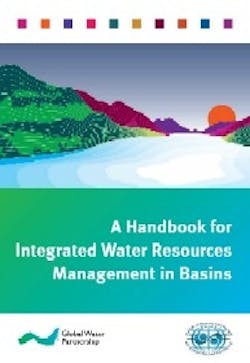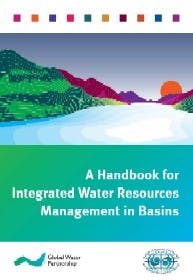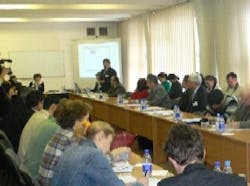Integrated Water Resources Management: Global Water Collaboration on the Rise - 2009
By Farhad Mukhtarov
• A visiting scholar at Oxford University's Centre for Water Research assesses status of IWRM efforts worldwide
The idea of integrated water resources management (IWRM) was born with the U.S. Reclamation Act of 1902. The principle of watershed management was endorsed by then President Theodore Roosevelt and further "Handbook for Integrated Water Resource Management in Basins" from Global Water Partnership and INBOsponsored by multiple-purpose dam and reservoir construction, such as the Hoover Dam and many other structures built since the 1930s on the Columbia, Colorado, Missouri, Tennessee and other rivers. The “unified river basin development” as it was called then, became symbolically exemplified by the Tennessee Valley Authority (1933), which is now regarded as a “grand-daddy” of modern regional development projects. Starting from the 1950s the United Nations disseminated the concept and practice of IWRM with such important milestones as the Mar del Plata Conference (1977), Dublin Conference (1992), Johannesburg Summit (2002) and creation of the World Water Council and Global Water Partnership (both in 1996).
Definition and principles
Principles of IWRM nowadays include watershed management, horizontal integration (among various uses, stakeholders and values), vertical integration (among multiple levels of administration) and public participation. This list isn't full as there's a lively debate in academic and professional circles on what constitutes IWRM. There are more than 30 definitions and despite the rich literature on case studies, an effective blueprint to put it in practice is absent. To give some examples of IWRM definition, renowned Cornell University professor Daniel Loucks frames it as “those systems designed and managed to fully contribute to the objectives of society, now and in the future, maintaining their ecological, environmental and hydrological integrity”. The Global Water Partnership defines IWRM as a “process which promotes the coordinated development and management of water, land and related resources, in order to maximize the resultant economic and social welfare in an equitable manner without compromising the sustainability of vital ecosystems”. As such, IWRM should be regarded as a policy framework with the details to be developed for each case specifically.USA: Collaborative partnerships
Since the mid-1980s, the number of small scale collaborative watershed partnerships has grown significantly in the USA to become an embodiment of IWRM. Nearly 350 watershed partnerships have been identified west of the Mississippi River, with 150 reported in California alone. The U.S. Department of Agriculture and Environmental Protection Agency endorse creation of such partnerships in which state, tribal, federal, local governments and the public come together to identify and solve water problems in small watersheds that never cover the whole river basin but only parts of it. States such as Massachusetts, Oregon, Washington, Wisconsin, Pennsylvania and California have established programmes to encourage such partnerships. Still, some level of skepticism about local control in such partnerships exists on the part of national environmental groups. The Bush Administration was much less supportive of watershed collaborative partnerships than the Clinton Administration, and the hope is the current U.S. administration will continue to develop them as a form of IWRM.
Figure 1. Comparison of 3E's of IWRM and the preambles (P) and articles (A)Source: Ker Rault and Jeffrey, from Water & Environment Journal, December 2008.EU:Water Framework DirectiveIn Europe, IWRM is reflected in the European Union Water Framework Directive (WFD 2000) which puts forward a plan for water management until 2015, and in some cases 2020. The WFD is supplemented with two daughter directives: The Groundwater Directive (2006) and the Priority Substances Directive (2008). There are also a number of other directives related to water released before and after 2000, such as the Bird Directive (1979), Habitat Directive (1992), Drinking Water Directive (1998), Urban Wastewater Treatment Directive (1991), and Floods Directive (2007).In accordance with the WFD, EU countries are required to publish river basin management plans (RBMPs) by this year – whereas in England, the Environment Agency released RBMPs for public consultation in December 2008. The four most innovative features of the WFD include: 1) river basin management; 2) combination of emission limits and water quality objectives for pollution control; 3) costs to the user reflecting the true cost of water provision; and 4) public participation. It's an expensive undertaking, though, with implementation costs in the UK only expected between €3 billion and €11 billion. Interestingly, there are several similarities between the WFD and the U.S. Clean Water Act (1972), such as the reference to unimpacted water bodies, goal-setting of water quality to sustain designated water uses, criteria for downgrading standards, and provision for no further degradation and undesirable substances. There are also significant differences between the WFD and the CWA. The WFD has a broader scope as it covers freshwater and groundwater, while the CWA concerns primarily navigable waters – although the U.S. Congress may revisit that issue due to limitations of a Supreme Court ruling in 2007 (Rapanos vs. U.S.). Moreover, the WFD makes provisions for diffuse as well as point source pollution, whereas the CWA focuses almost exclusively on point source pollution. The WFD requires strategic planning at watershed level and cost-recovery of water services, whereas this is hardly demanded by U.S. water services. This all makes the WFD the closest present approximation of IWRM in practice. According to Delft University of Technology's Philippe Ker Rault and Cranfield University's Paul Jeffrey, for example, the WFD is based on the 3Es dimension of IWRM: economic (cost-recovery principle); 2) environmental (RBMP and no further degradation); and 3) ethical (public information and involvement). In Figure 1, they discuss preambles and articles of the WFD with regard to these dimensions.Balkhash-Alakol River Basin Council Meeting (Kazakhstan
IWRM in developing nations
Since the Johannesburg Plan of Implementation at Earth Summit 2002, country signatories have committed to produce national IWRM and Water Efficiency (WE) Plans. While this ambition was unrealized by most signatories by the 2005 deadline, efforts on IWRM plan preparation continue in many countries. According to the UN-Water “Status Report on IWRM and Water Efficiency Plans,” released in May 2008, those with plans completed or under preparation represent 38% of 53 developing countries assessed. Africa was found to lag behind Asia and the Americas on most issues but to have more advanced stakeholder participation and micro-credit programmes. Asia, in turn, is more dynamic in institutional reform but needs better institutional coordination. Statistics and indicators used to gauge IWRM progress can be found in the report. The author's research of a joint UNDP and government of Kazakhstan project on IWRM and WE Plan preparation suggested several practical lessons for developing countries. First, national level Figure 2. Photo: Courtesy of the UNDP Kazakhstanconsultation of the draft IWRM plan with all relevant government and non-governmental stakeholders is necessary, however slow and bureaucratic. Second, it's crucial to provide river basin councils an organized forum for public participation and policy coordination at the basin level. Third, monitoring and adequate information management system with regard to water resources availability and use is instrumental in moving towards IWRM, especially in the context of developing nations with relatively poor information and monitoring systems.
Unified management mechanism
IWRM is on the rise in the world embodied in small-scale watershed partnerships in the USA, the Water Framework Directive in Europe and an increasing number of national IWRM plans in developing countries.
The World Water Development Report 3 (www.unesco.org/water/wwap/wwdr/) presented at the 5th World Water Forum in Istanbul, March 16-22, offers further guidance on IWRM, as does the International Network of Basin Organizations' new “IWRM Handbook” (www.inbo-news.org), also released at the forum.While this practical guidance is highly useful, it must be remembered the mandate of IWRM is to solve complex social problems that would require an adaptive management approach and evidence-based “learning by doing” process. IWRM currently offers the only framework to deal with diverging and converging water needs, which have gained recognition as not only a technical issue but a complex political, socioeconomic and cultural problem. WWi
Author's Note:
With a master's degree in environmental sciences and policy from the University of Manchester, Farhad Mukhtarov is a doctoral candidate at Central European University in Budapest, Hungary, and the Visiting Chevening Scholar at the Centre for Water Research at England's Oxford University. An IWRM consultant for the UNESCO International Hydrological Programme in Paris, he has conducted research on water management and policy in England, Norway, Hungary, Turkey, Kazakhstan, Georgia and Azerbaijan. Contact: +36 (70) 654 6818 or [email protected]###
Sponsored



